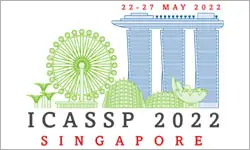SEGNET-BASED DEEP REPRESENTATION LEARNING FOR DYSPHAGIA CLASSIFICATION
Siddharth Subramani, Achuth Rao M V, Anwesha Roy, Prasanta Ghosh, Prasanna Suresh Hegde
-
Members: FreeSPS
IEEE Members: $11.00
Non-members: $15.00Length: 00:09:47
09 May 2022
Swallowing disorders, broadly known as Dysphagia, are difficulties in the process of swallowing food. Many currently available methods for classifying healthy and dysphagic swallows typically use hand-picked acoustic features. This article presents a SegNet-based method for classifying healthy and dysphagic swallow signals by learning mel-spectrogram features. Swallow sounds were recorded from a total of 24 subjects using a microphone based cervical auscultation (CA) system. Each subject swallowed multiple samples of water of volumes 5ml, 10ml and 15ml, and also performed multiple dry swallows. The experiments investigated the significance of temporal structures in the SegNet-learnt representations. The classification performance was evaluated at different model depths in order to identify the optimum feature time-scale that maximized the classification performance. The proposed method was found to be more robust to variations in the signatures of swallow signals across multiple volumes of water, against a baseline method across a single volume of water. The best performing model yielded a mean test F1-score of 80.13% (�4.62%) in a 5-fold cross validation setup.
